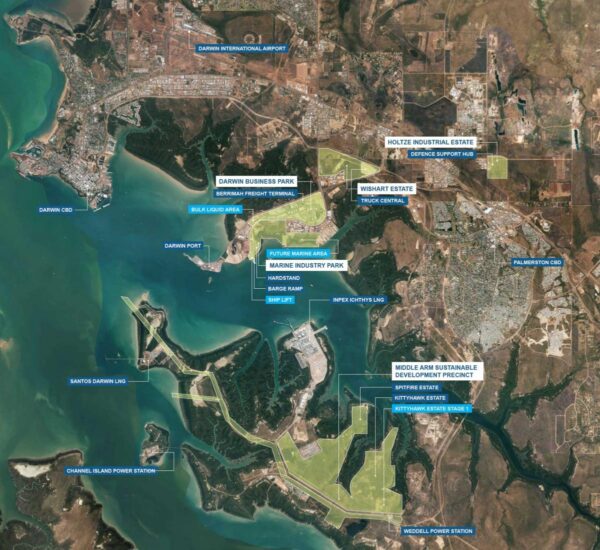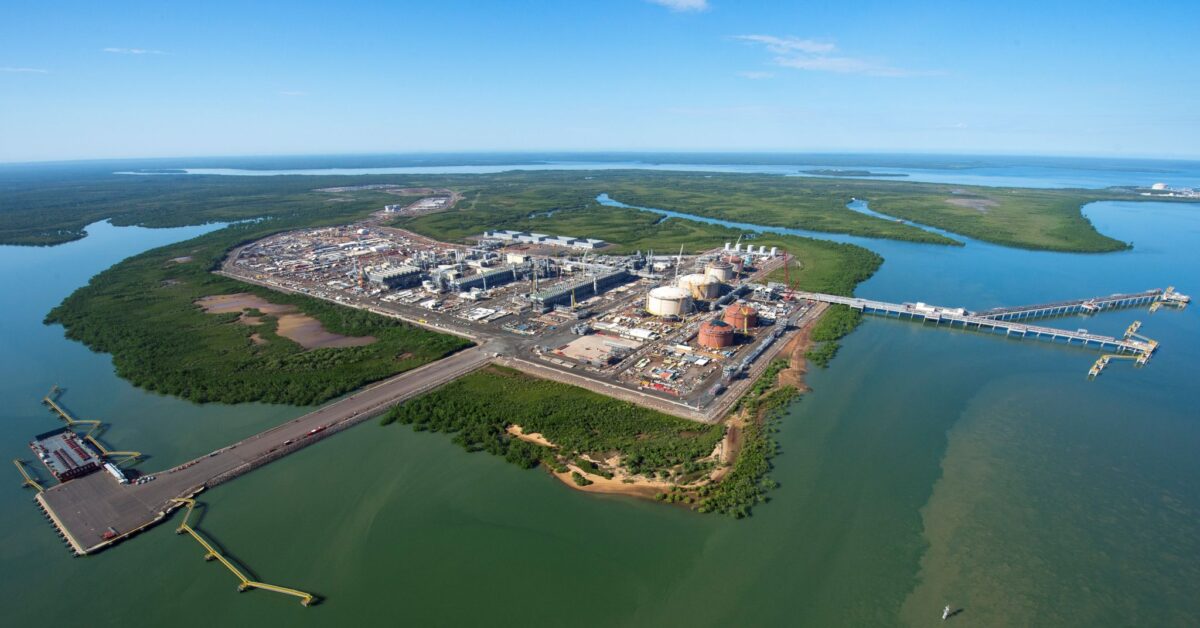The Northern Territory (NT) government has taken the next step towards developing its Middle Arm Sustainable Development Precinct, issuing ‘not to deal’ commitments to five proponents for specific parcels of land at the precinct planned for a 1,500-hectare site at Middle Arm.
Fortescue Future Industries (FFI) and Total Eren, both of which are pursuing green hydrogen projects in the Territory, are among the companies to have secured land in the precinct that has already received $1.5 billion (USD 1.01 billion) in federal funding.
FFI has yet to reveal the details of its proposed project but Total Eren signed a non-binding agreement with the NT government last year to build a green hydrogen project near Darwin that would include more than 2 GW of solar providing energy for a 1 GW electrolyser to produce more than 80,000 tonnes of renewable hydrogen per annum.
Minerals company Tivan, which plans to build a facility at the Middle Arm precinct to process vanadium for products such as batteries, and fellow Perth-based battery minerals producer Avenira, which is focused on developing a plant to process minerals for lithium phosphate batteries, are also on the list of likely anchor tenants.
The fifth proponent to secure land in the ‘sustainable’ precinct is Tamboran Resources, which has announced plans to develop a gas processing facility supported by gas sourced via fracking operations at the Beetaloo Basin.
Tamboran’s inclusion in the precinct has prompted critics to question the environmental merits of the Middle Arm precinct but NT Chief Minister Natasha Fyles has consistently described the project as a sustainable development precinct.
“We’ve always said that sustainability will be at the core of Middle Arm, and our focus on clean energy demonstrates that,” she said. “A lot of nonsense gets spouted about Middle Arm, but today’s announcement shows the Territory, investors and the rest of the country just how committed my government is to making this a reality.”
Fyles said the Middle Arm precinct will play a key role in the Territory’s future, delivering “new sources of renewable and low-emissions energy, new investment, new industries, and most importantly, new jobs for Territorians.”
“We’re absolutely committed to growing our economy while also transitioning to net zero emissions, and Middle Arm will play a huge part in that transition,” she said. “This is what responsibly decarbonising and diversifying our economy looks like.”

The NT government has forecast that collectively, the projects awarded exclusivity over land in the precinct represent tens of billions of dollars in capital investment, with the entire Middle Arm development to create about 20,000 jobs in the Territory.
The government said the land commitments mean the proponents’ preferred sites in Middle Arm will be set aside for up to 12 months to provide each developer with the “confidence and certainty” to continue developing their proposals.
The companies are now expected to progress their facility designs, engineering work and pre-feasibility studies and environmental approvals.
The allocation of land comes after the federal government this week awarded $1 million for a feasibility study into the growth potential of a clean hydrogen market in Darwin.
The Darwin Clean Hydrogen Hub joint feasibility study will look at opportunities to supply clean hydrogen solutions to domestic and international customers.
Middle Arm is already home to a liquefied natural gas (LNG) export hub, and the Territory government is pushing ahead with construction of a 35 MW/35 MWh battery at the site. The Darwin-Katherine Battery Energy Storage System is expected to be operational later this year.
This content is protected by copyright and may not be reused. If you want to cooperate with us and would like to reuse some of our content, please contact: editors@pv-magazine.com.









1 comment
By submitting this form you agree to pv magazine using your data for the purposes of publishing your comment.
Your personal data will only be disclosed or otherwise transmitted to third parties for the purposes of spam filtering or if this is necessary for technical maintenance of the website. Any other transfer to third parties will not take place unless this is justified on the basis of applicable data protection regulations or if pv magazine is legally obliged to do so.
You may revoke this consent at any time with effect for the future, in which case your personal data will be deleted immediately. Otherwise, your data will be deleted if pv magazine has processed your request or the purpose of data storage is fulfilled.
Further information on data privacy can be found in our Data Protection Policy.